The different Parts of Pliers are:
- Jaws
- Cutter
- Fulcrums
- Pipe Grips and
- Handles
Jaws: Jaws are the working end of pliers responsible for cutting, gripping, twisting, or performing other functions. These are also known as the nose of pliers.
Cutter: Above the pivots, there is a cutter and, these are responsible for cutting wires and metals.
Fulcrums: This is the point where the handles and jaws connect and, these are responsible for creating the force required by the jaw to perform the work.
Pipe Grips: Pipe grip is an oval or round shape opening on the jaw used for tightening or loosening fastener or griping the pipes and other round objects.
Handles: Handles helps to hold the pliers. These can be curved or straight and with or without covers.
Now Types in detail.
Different Types of Pliers:
Here are different types of pliers according to their design, shape, sizes, and usage:
- Slip Joint Pliers
- Lineman’s Pliers
- Tongue And Groove Pliers
- Diagonal Pliers
- Needle Nose Pliers
- Bent Nose Pliers
- Round Nose Pliers
- Locking Pliers
- Sheet Metal Pliers
- Canvas Pliers
- Crimping Pliers
- Ring Pliers
- Bail Making Pliers
- Battery Pliers
- Brake Spring Pliers
- Combination Pliers
- Eyelet Pliers
- Grommet Pliers
- Hose Grip Pliers
- Oil Filter Pliers
- Push Pin Pliers
- Wire Twisting Pliers
- Fencing Pliers
- Piston Ring Pliers
- Welding Pliers
- Soft Jaw Pliers
- Nail Puller Pliers
Let’s understand one by one in detail.
Slip Joint Plier:
The slip joint is the plier with the movable fulcrum or pivot to adjust the width of the jaw, just like the adjustable wrenches. There are different variations of pliers that have a notch at the fulcrum for the bolts to set in when the jaws are wide open allowing you to lock the jaws at a certain width.
Plumbing operation uses these pliers more often and can perform all the jobs as an adjustable wrench. These pliers cannot cut wires as these does not have a cutter.
Lineman’s Pliers:
You may not identify this plier by its name but, there are high chances you might have used it at some point in your life. Lineman’s plier is the most commonly used plier due to its ease of use and multifunctionality.
You can easily recognize this plier by its jaw having a shorter and flat gripping surface at the tip and cutting surface at the middle of the tool. It is handy and often used by electricians while performing the electrical job. Because of its multifunctionality and strength, You can use it for bending and twisting metal or cutting wires.
It comes with two handles making it easy to grip with a layer of insulation that helps to prevent electric shock while using them. And some models can handle up to 1000volts.
Tongue and Groove Pliers:
Tongue and groove is a type of slip lock plier as known as channel lock plier adjustable plier or water pump plier. The design of the tongue and groove plier is simple yet effective where the jaws of the plier are set, at 45 to 60 degrees of the handle.
As per the requirement of the work, You can adjust the lower jaw at various positions. The plier design is such that we can change it to several sizes without increasing the gap between the two handles.
The design allows us to use the plier in a compact or small space where reaching with the other pliers is difficult. The handles of the plier are 9 to 12 inches in length to enhance the leverage. These are primarily used for turning the nuts and bolts. You can quickly recognize these pliers with their handles.
Diagonal Plier:
A diagonal plier is primarily used to cut different types of wire. The plane created by the jaw meets the rivet at an angle. That’s the reason these are known as diagonal pliers.
Common names of diagonal pliers are wire cutter, diagonal cutting pliers, side-cutting pliers, etc. They work just the same as the scissor’s work but, the cutting process is different. It cut the wire by indenting and wedging the section of it.
They are very robust, so you can even use them to cut nails. Thus these are widely used by carpenters and electricians. You can quickly identify the diagonal plier by the X shape when you see these from the front.
Needle Nose Pliers:
Needle nose pliers have an elongated nose or pointed nose and have a cutting edge near the base. This tool is generally used for cutting, bending, shaping, or holding purposes. They are also called pointy nose or snipe nose pliers. They have a longer nose.
They are generally used in compact places where it is difficult to reach with regular pliers. Due to its versatile nature, multiple industries use this plier like jewelry, electrical, fishing, etc.
Bent Nose Pliers:
Bent nose pliers, as suggested by the name jaw of this plier is bend at some angle. It performs the same function as the needle nose plier. The main difference is it has a bent nose. Most commonly, the angle can be between 45 degrees to 90 degrees.
You can quickly identify them by looking at their bent nose. Because of its bent nose design, it can reach easily and compact places where it is hard to reach, with regular pliers. You can easily find these pliers with the carpenter, jewelry makers, electricians, and sometimes mechanics.
Round Nose Pliers:
Round nose pliers have a rounded conical-shaped jaw. They are termed chain nose pliers and rosary pliers. You can quickly notice this plier by seeing their rounded jaws. They have spiring provided at the joint for smoothly opening and closing the pliers.
You can observe jewelers and rosery smiths using these pliers for creating loops in the jewelry specifically, rosaries and other similar projects. If you have seen bails, toggle clasp or, jump rings all, these manufactured using round nose pliers. Rosery pliers and jewelry pliers are other common names of these pliers.
Locking Pliers:
Locking pliers, as the name suggests, the jaws of these pliers can lock at a specific range making, them the best tools for gripping stripped fasteners and bolts. It is widely used in manufacturing as well as production industries. Vise plier is the other most common name of locking pliers.
And it is available in various variants allowing you the choice over multiple options according to the requirement. Locking pliers have pair of jaws as the regular plier with two handles where one handle consists of a bolt for adjusting the gap between the jaw and, the other handle has a lever for locking and unlocking the plier.
Sheet Metal Pliers:
Sheet metal pliers as the name suggest this plier is used by metal industries for dealing with sheet metals. You can quickly identify it with the broad & rectangular jaws used for bending the sheet metal & formation of seams. Sheet metal pliers are commonly found in the metal shop and sheet metal industries. They are also known as seamers pliers.
Canvas Pliers:
Canvas pliers are a precious tool for the artists as this tool helps artists stretching the canvas. It has a spring-mounted between two handles. You can quickly identify this plier by the rectangle jaws consisting of padding the inner side of the jaw to avoid damage.
Crimping Pliers:
Crimping pliers, as the name suggests these are used for crimping the metal parts. It has a fulcrum at the far end and is used similarly as a nutcracker.
Wires are first put into the jack of the jaws and then to the connector. Pressing the handle breaks the plastic covering of the wires and results in deforming or crimping the two sections such that they connect and allows the date to pass through them.
It is mostly used in the telecommunication industry and networking industry you can also find them with your wifi and router setup boy. Also known by the name crimping tool.
Ring Pliers:
Snap ring pliers have a round short jaw that helps in closing the snap rings. Snap rings are the loops with an open end that gets into the round objects such as dowels. As closed, it’s easy for it to rotate by not move sidelong. You can easily find it with most of the hikers for holding objects.
It is also used in mountain bikes and other similar vehicles. You can use these pliers in holding any such object that you might be using in your daily lives. It is also known as retaining ring pliers, C-clip pliers, locking ring pliers, etc
Bail Making Pliers:
Bail-making pliers consist of two round or cylindrical jaws where one is slightly lengthier than the other. You can quickly identify these pliers by just observing their jaws. It is primarily used in the jewelry business for making clasps, ear wires, and other form ring parts by wrapping wires around the jaw.
Battery Pliers:
Battery pliers have short-sized jaws making them easy to use in compact bolts of battery one, of the jaw of the plier is shorter than the other jaw. The jaws of the pliers are thicker making it more durable and solid to open the clogged nuts and bolts.It is primarily used in automotive industries and, by the mechanics to open nuts on car batteries & jumper cables.
Brake Spring Pliers:
The brake spring plier having two jaws one jaw is curved and, the other jaw is rounded and, one jaw is used to removing and is used for inserting the spring. It is specifically used for handling the spring inside the drum brake. You can easily find them at any vehicle repair shop.
It can be used on the different application that requires removal and inserting the spring. You can easily find them with mechanics and can identify them by their curved and rounded jaws.
Combination Pliers:
Combination pliers, as the name suggests, are a multifunction tool that consists of three different sections in the jaw. Where above, the pivot is a cutter used for cutting wires or metal pins or nails, and above the cutter, there is a round or oval serrated surface used for gripping the pipes, thick round things, or bolts head. And at the top, there is the plane or serrated surface gripping objects.
It is useful for various works like cutting the wires, twisting wires, loosening or tightening the nuts or bolts, gripping the pipes, etc. Because of its multifunctionality, you can easily find them with mechanics, carpenters, plumbers, etc. And in various industries consider using it like automotive, construction, carpentry, electrical, etc.
Eyelet Pliers:
Do you know pliers are also used in the clothing industry? Amazed Eyelet pliers are the special types of pliers that are used in the clothing industry such as tailoring, cobbling, etc. The eyelets in the pliers help to laces and drawstrings in the clothes. It has an eyelet on either side of the jaws with elongated rings on both sides. Nowadays these pliers come with interchangeable dies that allow for both crimping and hole punching.
Grommet Pliers:
Grommet pliers are the same as the eyelet pliers in shape and working the only difference is they are used to create holes in tarps, stronger other materials, and for affixing grommets. Grommet is stronger and heavier than eyelet making this tool perfect for making the hole in them.
It is used in making holes in material like tents, shower curtains, tents, backpacks, duffle bags, garments, purses, etc. While making tents also this is used.
Hose Grip Pliers:
Hose grip pliers are the specific type of pliers that are used to remove or insert small hoses from tight spaces. These have grabbers jaws and, it prevents the damage to the hoses of the heater, vacuum lines & fuel lines. They are also known as grabber pliers and, You can identify them by their grabber jaw.
These are used by the plumber to put in or remove the hoses by twisting the hoses on either side. It can also be used on the spark plug and other different components.
Oil Filter Pliers:
Oil filter pliers are the specific type of pliers that are used only in a particular industry. They are unusual looking plier with the c-shaped pair of jaws with the toothed teeth where one is longer than the other teeth. The automotive industry uses them mostly to remove oil filter casing.
Push Pin Pliers:
Pushpin pliers have a wedge-shaped jaw for the removal of plastic push pins. It has a wedge-shaped jaw that gets under the plastic push pins to remove them quickly. It protects the anchor and the pins from damage. You can quickly identify these pliers by seeing their wedge jaw.
Squeezing the pliers causes the push pins to come out, allowing the anchors to come out safely. This tool is used by the automotive and other industry that uses the pushpin or anchors.
Wire Twisting Pliers:
Wire twisting pliers have smaller jaws. It has a gripping pane at the tip and cutting edge above the fulcrum. And in between the two handles, there is a cylindrical knobs knob, as well as a unique cylindrical locking mechanism. You can quickly identify the plier just by observing the cylindrical mechanism at the handles.
By locking the wire pieces in the jaw and pull the knob mechanism causes the entire tool to rotate which results in the twisting of the wires. They are used by the electrician as the name suggests for twisting the wires and often used by the jewelry makers to make different shapes and designs by twisting.
Fencing Pliers:
Fencing pliers kind of look like a hammer when jaws are closed. When you see the plier you can observe the notches at the side of the fulcrum used for cutting the wire whereas one end of the plier has a flat surface and another side has a claw.
The flatheads are used for driving the staples inside the post or pillar and wire is attached with these staples or nails. The claw is used for removing the nails or the staples from the pillars or the posts.
The notch given at the side of the fulcrum is used for cutting the wires when handles are opened. The slot above the fulcrum is used for joining the wires by twisting them. As the name suggests this plier is used for fencing.
Piston Ring Pliers:
Piston ring pliers are primarily used for removing the piston rings from the engine. There are two different types of piston ring pliers one The first has jaws with plain curved tips that can be used to stretch a piston ring for quick removal. And another one has a much wider curved set of jaws with multiple braces to protect the ring and avoid wrapping. You can easily find them in the automotive repair shop or with the mechanic.
Welding Pliers:
Welding pliers are similar to combination pliers they have a pair of pointed jaws. These pliers are multifunction pliers and most useful in the welding process. This tool can perform multiple functions like spatter removal, wire grasping, cutting, and even hammering. As the name suggests these are mostly used in welding-related jobs and you can easily find them with gate makers, ironsmiths, etc.
Soft Jaw Pliers:
Soft jaw pliers have padding inside the jaw to prevent damage to the soft metals. These pliers are used for pipes and scuba diving equipment to prevent scratches or damages to the equipment.
Nail Puller Pliers:
As the name suggests these pliers are used for pulling nails from various objects like wood, wall, hard plastic, etc. The structure of these pliers is very similar to a tong. It has a pair of tapered jaws used to grip the head of the nails. And help to pull out the nail from the wood.
The head of these jaws is usually made of forged steel. You can easily find these pliers with the carpenter and multiple woodworkers as they use them to remove the nails.
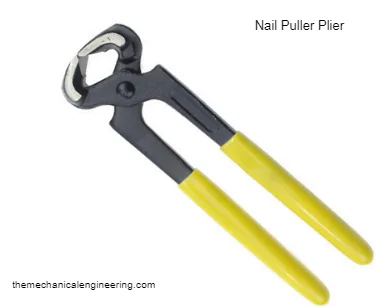
Conclusion:
Pliers are an important mechanical tool and used in multiple industries like automobile, aviation, production, repair & maintenance industry. Without the Pliers, it’s nearly impossible to imagine the way we would be twisting, gripping, cutting, and performing various works.
We have seen multiple types of pliers like standard pliers, lineman pliers, welding pliers, fencing pliers, etc. These all pliers are used in multiple types of works and industries.
There are also multiple types of specialized pliers like oil filter pliers, welding pliers, etc these are used for specialized works. Hope So this article has helped you to understand different types of pliers in the deeper sense. Comment down all the queries related to the topic.
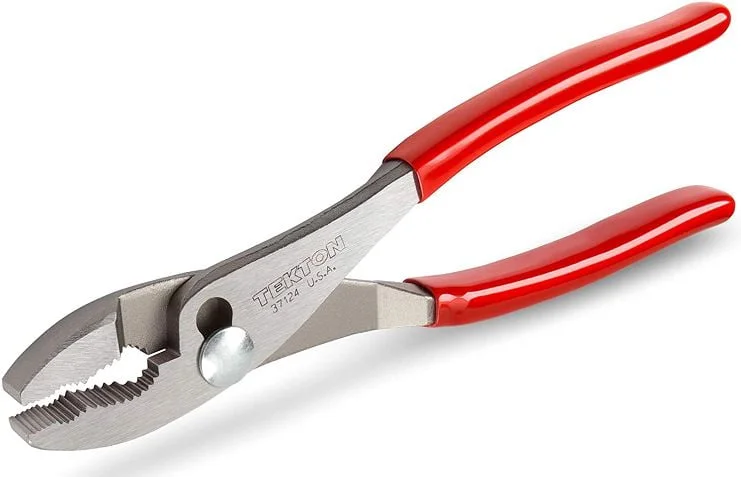
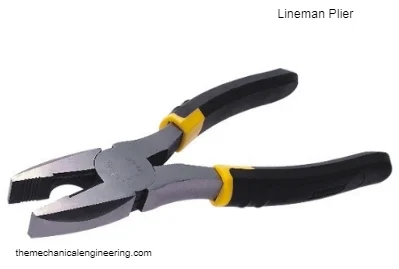
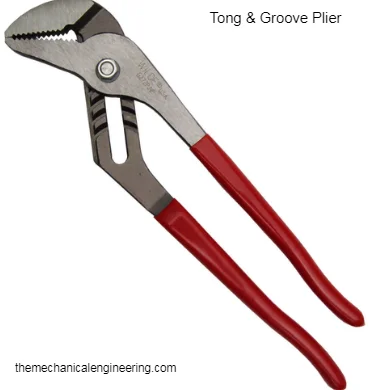
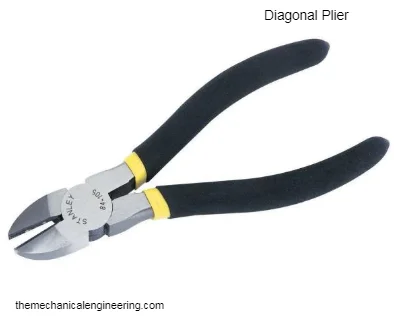
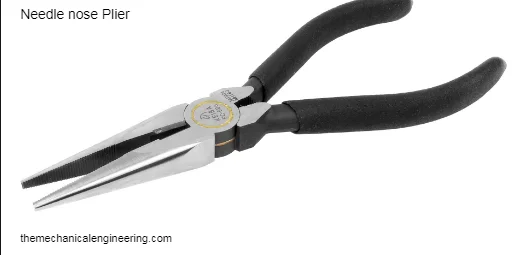
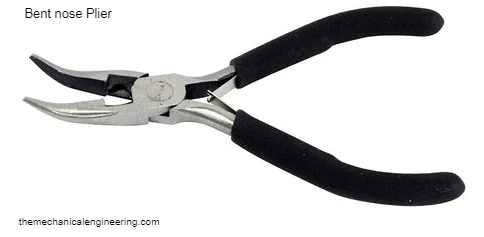
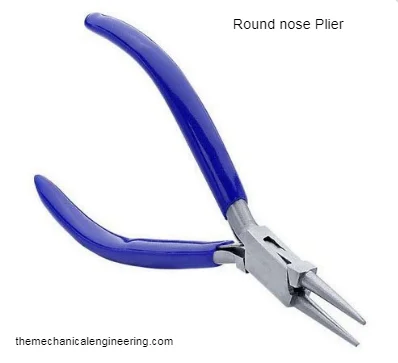
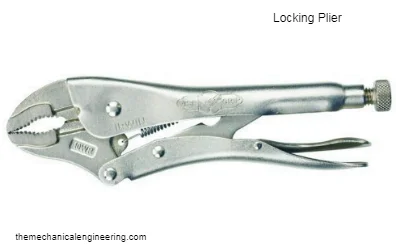
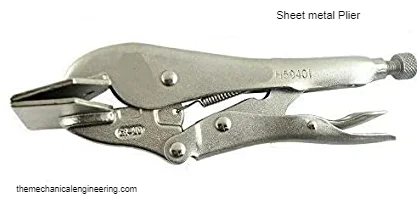
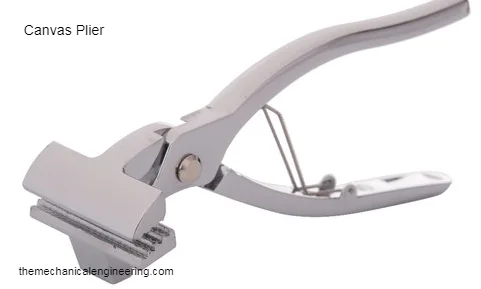
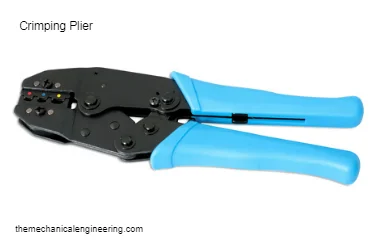
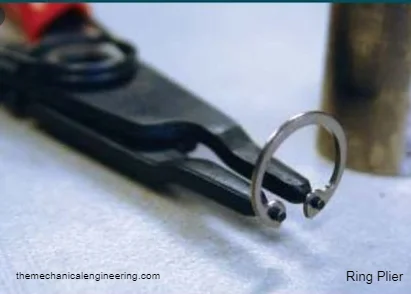
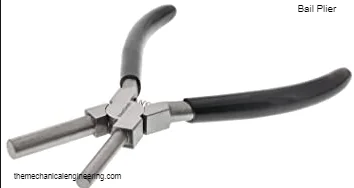
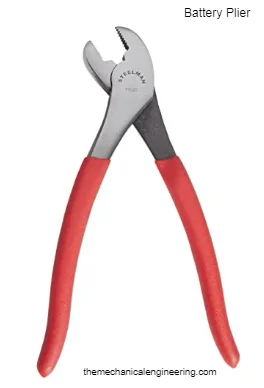

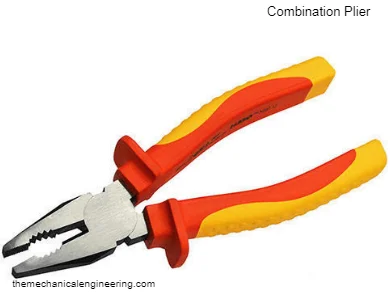
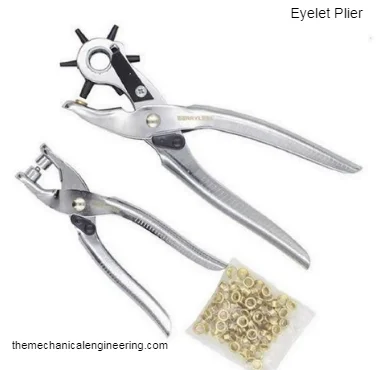
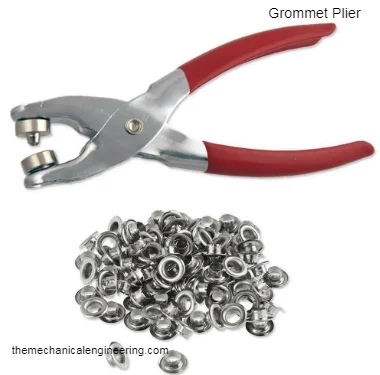
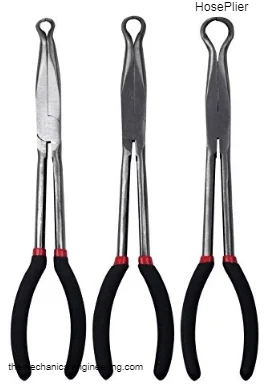
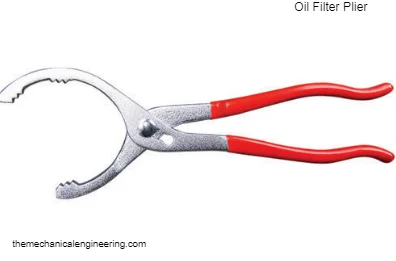
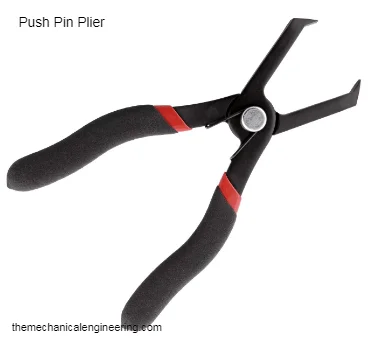
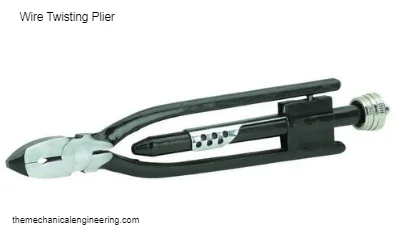
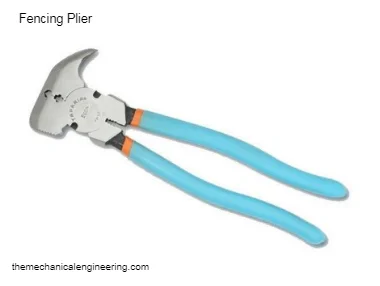
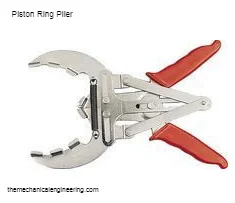
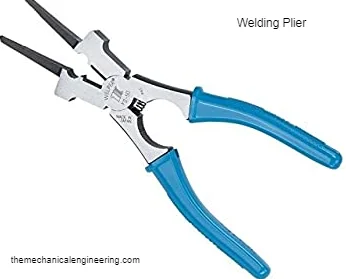
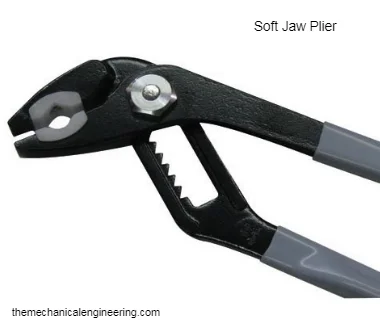
No comments:
Post a Comment